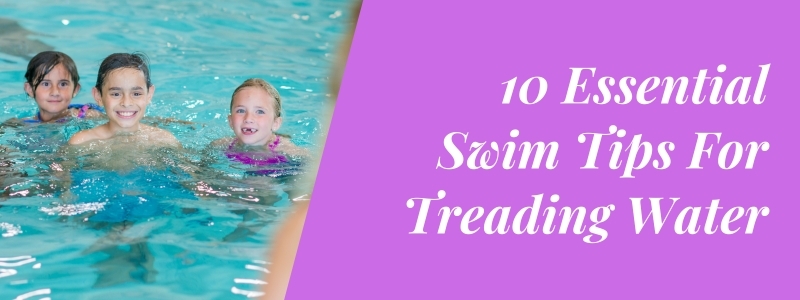
Treading water is a valuable skill that not only ensures your safety in deep waters but also serves as an excellent workout. Whether you're a beginner or looking to refine your technique, these ten essential tips for treading water will help you stay afloat effortless. So, let's explore the key elements that make treading water a skill worth mastering.
1.Relax and Conserve Energy:
The first and foremost tip for treading water is to stay relaxed. Tension in your muscles can lead to fatigue, making it harder to stay afloat. Conserve energy by keeping your movements fluid and controlled. Focus on staying calm, and let the water support your body weight.
2. Use a Sculling Motion:
Mastering the sculling motion is crucial for efficient water treading. Extend your arms to the sides and move them in a figure-eight or circular pattern. This gentle movement creates resistance against the water, helping you stay buoyant. Experiment with different hand positions to find what works best for you.
3. Maintain an Upright Body Position:
Keep your body upright in the water to reduce drag. Tilt your head back slightly, allowing your ears to stay just below the waterline. This position helps you stay afloat with minimal effort, making treading water more sustainable.
4. Utilise the Eggbeater Kick:
The eggbeater kick is a powerful technique often used in water polo, but it's equally effective for treading water. Move your legs in a circular motion, similar to stirring a pot with your feet. This method provides stability and allows you to keep your head above water effortlessly.
5. Coordinate Arm and Leg Movements:
Syncronise your arm and leg movements for a harmonious treading experience. As your legs perform the eggbeater kick, complement it with the sculling motion of your arms. Coordination is key to achieving balance and stability in the water.
6. Master the Treading Water Float:
Learn to transition from treading water to a floating position. This involves bringing your knees up towards your chest while keeping your head back and arms extended. This floating position not only conserves energy but also allows you to rest momentarily during longer treading sessions.
7. Practice Deep Breathing:
Proper breathing is essential for sustained treading. Focus on taking deep breaths and exhaling slowly. This not only helps you stay calm but also ensures a steady flow of oxygen to your muscles, preventing fatigue.
8. Build Endurance Gradually:
If you're new to treading water, start with short sessions and gradually increase the duration as your endurance improves. Over time, you'll build the strength and stamina needed to tread water for more extended periods without feeling fatigued.
9. Use Your Hands Strategically:
Experiment with different hand positions to find the most effective technique for you. Whether it's the breaststroke pull or a modified backstroke movement, understanding how to use your hands efficiently can significantly impact your ability to tread water with ease.
10. Stay Mentally Engaged:
Treading water is not just a physical exercise; it also requires mental engagement. Stay focused on your technique, be aware of your body position, and make adjustments as needed. Developing a strong mental connection with the water enhances your overall treading experience.
Treading water is a valuable skill that goes beyond basic water safety; it's a form of exercise that engages multiple muscle groups and fosters confidence in the water. By incorporating these ten essential tips into your treading routine, you'll not only stay afloat effortlessly but also enjoy the many benefits of this versatile aquatic skill. So, lace up your imaginary water shoes, dive in, and make treading water a skill you master with finesse!
